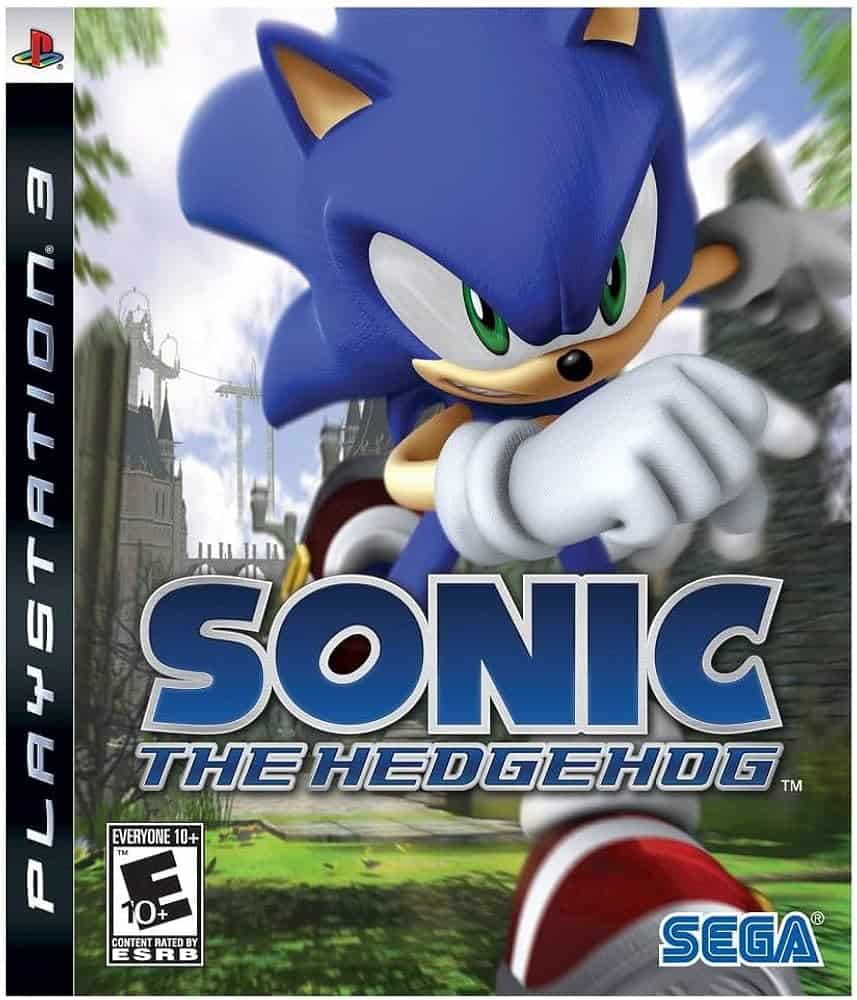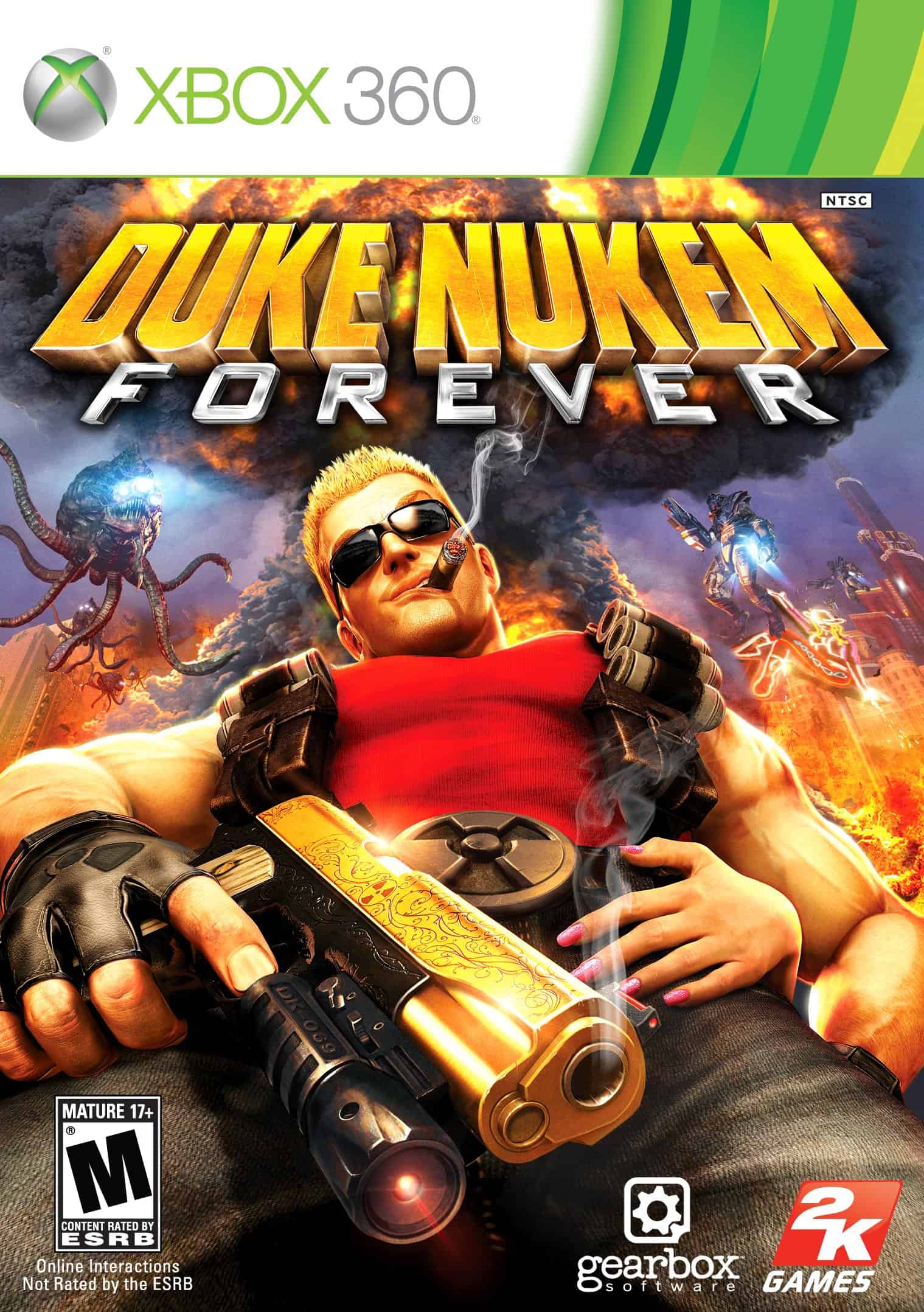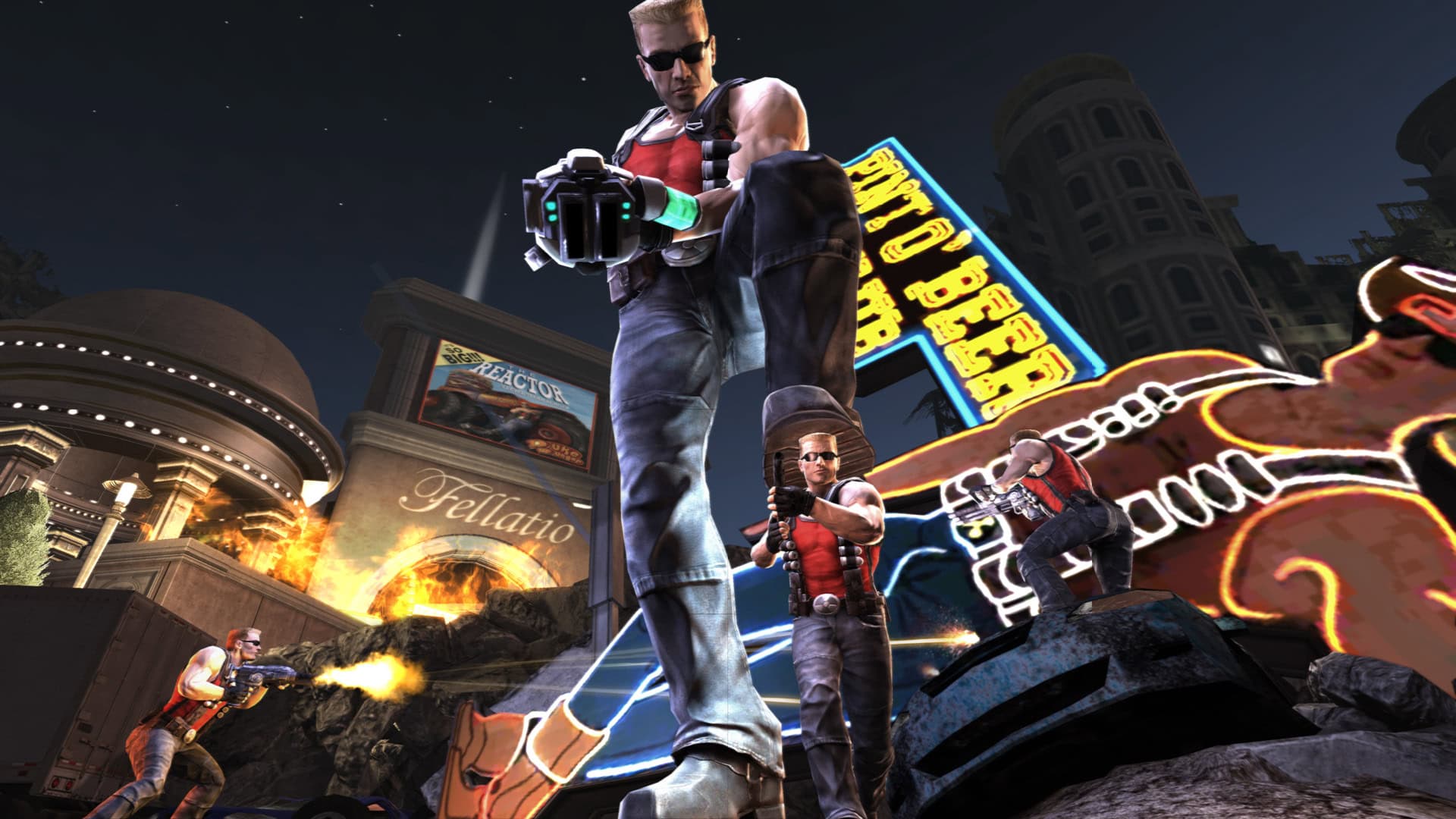There’s nothing quite like the excitement of a great video game getting a sequel. For fans, it’s a chance to revisit beloved characters, worlds, and mechanics—often with hopes of better graphics, smoother gameplay, and deeper stories. But as every gamer knows, not all sequels deliver on that promise. In fact, some do the exact opposite.
Sequels carry enormous expectations, especially when they follow groundbreaking or cult-classic originals. Whether it’s due to rushed development, creative overreach, studio shakeups, or misguided attempts to modernize a franchise, a bad sequel can derail years of goodwill in a single release. Some games miss the mark so badly, they don’t just disappoint—they reshape public perception of the entire series.

Just look at titles like Duke Nukem Forever and Sonic the Hedgehog (2006), both of which became infamous not just for their gameplay flaws but for what they represented: the consequences of ignoring what fans actually loved. Other sequels, like Banjo-Kazooie: Nuts & Bolts, weren’t technically broken—they just veered so far off course that longtime players were left wondering who the game was even for.
In this article, we’re diving into ten of the most disappointing video game sequels of all time—games that fell short, let down loyal fans, and in some cases, nearly destroyed their franchises. These are the cautionary tales developers still talk about today, the kind of games that show how difficult it really is to recapture lightning in a bottle.
1) Duke Nukem Forever

Duke Nukem Forever is known as one of the biggest disappointments in gaming history. It was released in 2011 after a long and troubled 14-year development. Many remember this game more for its difficult production than for its actual gameplay. By the time it came out, its mechanics and design choices felt outdated. What might have seemed cutting-edge in the late 1990s came off as old-fashioned in 2011, with awkward controls and repetitive combat. Duke’s personality, which used to be considered edgy and funny, now felt childish and offensive to many players. His one-liners and attitudes did not adapt to changing social norms.
The graphics were also below standard compared to other first-person shooters released at that time, despite attempts to update the game engine during development. The levels lacked the creativity and flow seen in earlier games of the franchise. Players faced frustrating platforming sections and puzzles that interrupted the gameplay instead of making it better. Critics and fans gave the game poor reviews. Many called it average at best, especially disappointing after such a long wait and in light of the success of Duke Nukem 3D.
The game’s development involved several studios and publishers, including 3D Realms and Gearbox Software. This complicated production history resulted in an inconsistent final product lacking a clear vision. Duke Nukem Forever serves as a warning in the gaming industry. It shows how long development times without direction can harm even beloved franchises. The game did not perform well commercially, despite gamers’ curiosity about the long-awaited sequel. This failure has led to the Duke Nukem franchise being mostly dormant since then.
2) Banjo-Kazooie: Nuts & Bolts
Banjo-Kazooie: Nuts & Bolts is one of the most controversial sequels in gaming history. Released in 2008 for the Xbox 360, this game took the beloved characters in a new direction. Instead of continuing the classic platforming style that fans loved, developer Rare changed it into a vehicle construction game.
The main issue wasn’t that Nuts & Bolts was bad on its own. Many critics praised its vehicle creation features and physics. The problem was that it left out almost everything that made the original Banjo-Kazooie games special. Fans who enjoyed collecting jiggies and musical notes through skilled platforming found themselves building cars, planes, and boats to complete tasks. The core gameplay that defined the series was mostly gone.
The game starts with Banjo and Kazooie, now lazy and overweight, being challenged by the Lord of Games (L.O.G.) to vehicle-based tasks. This felt dismissive to fans of the earlier games, as if the developers thought the old platforming style was outdated. The bright, connected worlds from the original games were replaced with larger, less engaging areas designed for vehicles rather than platforming.
While the new environments were technically impressive, they lacked the charm and clever design of the previous titles. The game also treated its own history poorly. It seemed to mock what fans loved about Banjo-Kazooie, making it look like the developers were embarrassed by it. The vehicle-building feature, although innovative, felt out of place. Players spent more time in menus adjusting parts than enjoying the fun character interactions the series was known for.
Sales for Nuts & Bolts did not meet expectations, and the franchise has been quiet since its release. This sequel is well-known for ending a beloved series instead of bringing it back to life. The game teaches a valuable lesson about sequels: when innovating, always build on what made the original special, rather than replacing it completely. While trying something new can be good, Nuts & Bolts strayed too far from what fans loved.
3) Sonic the Hedgehog (2006)
Sonic the Hedgehog (2006), often called “Sonic ’06,” is still one of the most disappointing game sequels ever released. Developed as a reboot for the Sonic franchise on PlayStation 3 and Xbox 360, the game was rushed to meet holiday deadlines, resulting in numerous problems.
The game’s controls are fundamentally broken. Characters, especially Sonic, move with unpredictable acceleration and stopping power. This makes simple platforming sections frustrating experiences for players.
Level design in Sonic ’06 shows a complete misunderstanding of what made earlier Sonic games fun. Stages are poorly structured with awkward camera angles that make it difficult to see upcoming obstacles or platforms.
Bugs and glitches plague the entire experience. Characters frequently clip through solid objects, fall through floors, or get stuck in the environment. Load times were also notoriously long, sometimes taking up to a minute between sections.
The story represents another low point. The plot includes a bizarre human-hedgehog romance subplot between Sonic and a human princess. This unusual relationship choice left many fans uncomfortable.
Multiple playable characters diluted the experience further. Players were forced to trudge through mediocre gameplay sections with characters like Silver the Hedgehog, whose telekinesis powers were poorly implemented.
Despite these flaws, Sonic ’06 does have some defenders. The music received positive reviews, and some fans appreciate the ambitious scope. Some elements of the game showed promise that was never fully realized.
The fan community has even attempted to salvage the game. “Sonic P-06,” a fan remake project, addresses many of the original’s issues and has been praised for showing what the game could have been with proper development time.
Sonic ’06 serves as a cautionary tale about rushing game development. Its failure prompted Sega to reconsider its approach to Sonic games, eventually leading to better-received titles like Sonic Generations.
The game’s reputation has cemented it as not just one of the worst Sonic games, but one of the most disappointing sequels in gaming history. It represents a low point for a character who was once considered a worthy rival to Mario.
4) Bomberman: Act Zero
Bomberman: Act Zero has been one of the most criticized video game sequels in gaming history. Released for the Xbox 360, this 2006 title completely abandoned the colorful, cartoon-like charm that defined the Bomberman series for decades.
The game tried to reimagine the cheerful franchise with a dark, gritty aesthetic. Instead of the familiar round, white bomber character, players controlled armored cyborgs in bleak, industrial environments. This dramatic shift alienated longtime fans who loved the series for its colorful and friendly appearance.
Critics were harsh in their assessment, with the game receiving abysmal scores across the board. Many review sites gave it ratings as low as 25-29%, marking it as one of the worst-rated games of its generation.
The gameplay also suffered from significant issues. While Bomberman had always been known for accessible and fun multiplayer action, Act Zero featured repetitive single-player challenges that forced players to start over completely if they failed.
The decision to eliminate save points created unnecessary frustration. Players had to complete 99 consecutive levels without dying to truly “beat” the game, a punishing design choice that few found enjoyable.
The multiplayer mode, traditionally the highlight of Bomberman games, lacked local split-screen options. This removed the party-game appeal that had been central to the series’ identity.
The game’s art direction and character designs were particularly criticized. The cyborg characters were nearly indistinguishable from each other, lacking personality compared to the expressive characters in earlier titles.
Act Zero serves as a cautionary tale about straying too far from a beloved franchise’s core identity. Hudson Soft, the developer, clearly misunderstood what made Bomberman special to fans.
The failure of Act Zero prompted future Bomberman releases to return to the series’ traditional style. Later games once again embraced colorful graphics and accessible gameplay that had made the series successful for so long.
Despite its many flaws, Act Zero remains an interesting case study in video game development. It demonstrates how even established franchises can stumble when trying to adapt to perceived market trends rather than building on their unique strengths.
5) Tony Hawk’s Pro Skater 5
Tony Hawk’s Pro Skater 5 is one of the most disappointing game sequels in video game history. Released after a long break from the franchise, fans had high hopes that this title would return the series to its former glory. Unfortunately, it did the opposite.
The game launched in 2015 with numerous technical issues that made it nearly unplayable. Glitches were everywhere, with skaters falling through the world, physics behaving erratically, and frequent crashes disrupting gameplay.
Graphics were another major letdown. Despite releasing on PlayStation 4 and Xbox One, the visuals appeared outdated and lacked the polish expected from a modern game. The character models looked stiff and unnatural compared to earlier titles in the series.
The gameplay, which had always been the heart of Tony Hawk games, felt hollow and unresponsive. The tight controls and satisfying tricks that defined the series were replaced with clunky mechanics that failed to capture the essence of skateboarding.
Level design was uninspired, with bland environments that lacked the creativity and fun of previous games. The objectives felt repetitive, and missions rarely encouraged the exploration and creativity that made earlier Tony Hawk games special.
Many critics and fans consider it not just the worst game in the Tony Hawk series, but one of the worst high-profile releases of its generation. Some search results even list it among the worst video game sequels of all time.
The game’s poor reception was particularly disappointing because the original Pro Skater games revolutionized sports games and skateboarding culture in the late 1990s and early 2000s. Pro Skater 5 failed to honor that legacy.
What makes this failure more significant is how it effectively ended the main Tony Hawk gaming franchise. After decades of games, this poorly executed sequel damaged the brand so severely that it took years before another attempt would be made with remakes of the original games.
The game’s failure wasn’t just about missed expectations—it represented how a once-innovative franchise lost its way through rushed development and lack of attention to what made the series special in the first place.
6) SimCity (2013)
SimCity (2013) was meant to be a triumphant return for the beloved city-building franchise. Instead, it became one of the most disappointing sequels in gaming history. The game launched with severe server issues that prevented many players from even accessing the game they had purchased.
The always-online requirement was a major source of frustration. Even though SimCity was primarily a single-player experience, EA required a constant internet connection to play. When servers crashed during launch week, players couldn’t access their cities at all.
The game also significantly reduced city sizes compared to previous entries. This limitation forced players to create small, specialized towns rather than the sprawling metropolises that fans loved building in earlier SimCity games.
Traffic AI was notoriously broken at launch. Vehicles would take the shortest route regardless of congestion, creating massive traffic jams that made city management nearly impossible. This fundamental flaw undermined the simulation aspect that was core to the series.
The game’s simulation had other serious issues too. The “agent” system that tracked individual Sims often led to bizarre behavior, with citizens sometimes taking illogical paths or disappearing entirely. Population numbers were also misleadingly inflated.
EA Maxis initially defended many of these design choices, including the small city sizes and online requirement. They claimed these limitations were necessary for the game’s complex simulation, but modders later proved this wasn’t entirely true.
Eventually, the developer added an offline mode in response to player backlash. However, by then much of the damage to the game’s reputation had already been done.
The 2013 reboot effectively put the mainline SimCity series on hiatus. The franchise that had pioneered the city-building genre was overshadowed by competitors like Cities: Skylines, which delivered the expansive city-building experience fans had wanted.
SimCity (2013) serves as a cautionary tale about prioritizing new features and DRM over the core gameplay that made a series successful in the first place. Its troubled launch and fundamental design issues disappointed longtime fans and newcomers alike.
7) Devil May Cry 2
Devil May Cry 2 is often seen as a disappointing sequel in gaming history. Released in 2003 after the highly praised original, it failed to capture what made the first game great. The combat system took a step backward. While the original game had tight controls and satisfying combat, the sequel simplified the mechanics, removing much of the depth that fans loved.
Enemy design was another issue. Players faced boring opponents that presented little challenge and required minimal strategy to defeat. This made battles feel repetitive and dull. The environments also hurt the game’s reception. Large, empty areas replaced the detailed and atmospheric settings of the first game. These bland locations lacked character and made exploration tedious.
Perhaps the biggest disappointment was the main character, Dante. The charming and confident demon hunter from the original became nearly silent and lacked personality in this sequel. This change puzzled fans of the series. The story did not help either. It had a thin plot with little development, leaving players wondering why they should care about the events. Cut scenes failed to engage, and the stakes felt low.
Boss fights, which were a highlight of the original, became frustrating and tedious. Many bosses had simple attack patterns and could be beaten by using basic attacks from a distance. The game’s troubled development may explain these problems. Reports say that the original director left the project, and a new team had only four months to finish it. This rushed development is evident in the final product. Technical problems, uninspired level design, and a general lack of polish affected the game from start to finish.
Fans were so disappointed that Capcom took their criticism seriously. The next game, Devil May Cry 3, returned to what made the original great and is now seen as one of the best action games ever made. Devil May Cry 2 serves as a warning about sequel development. It shows how even successful franchises can stumble when they forget what made them special in the first place.
8) Star Fox Zero
Star Fox Zero launched on the Wii U in 2016 with high hopes for revitalizing the beloved space combat franchise. Instead, it became one of Nintendo’s biggest disappointments. The game was meant to harness the Wii U’s unique dual-screen functionality, but this led to its greatest downfall.
The control scheme forced players to divide attention between the TV screen and the GamePad. This created a frustrating experience where pilots had to manage two different perspectives simultaneously. Many players found themselves disoriented and unable to enjoy the core gameplay.
Critics and fans alike panned these complicated controls. What should have been an innovative feature became a barrier that prevented even dedicated Star Fox fans from enjoying the game.
Sales numbers reflected this negative reception. Star Fox Zero performed poorly commercially, failing to meet Nintendo’s expectations. This financial disappointment had lasting consequences for the franchise.
The game’s failure effectively put the Star Fox series into hibernation. No new mainline entries have been announced since Zero’s release, leaving Fox McCloud and his team grounded indefinitely.
What makes Star Fox Zero particularly disappointing is how it squandered the goodwill built by classic entries like Star Fox 64. The core gameplay loop of space combat should have translated well to modern hardware.
Nintendo partnered with PlatinumGames for development, a studio known for action game excellence. Even with this talented team, the awkward control scheme overshadowed any positive aspects of the game.
The visuals and music received praise, showing glimpses of what could have been. But these elements couldn’t overcome the fundamental issues with how players interacted with the game.
Star Fox Zero serves as a cautionary tale about prioritizing hardware gimmicks over player comfort. Sometimes innovation can go too far when it compromises basic playability.
9) Socom 4
Socom 4 stands as one of the most disappointing entries in a once-beloved tactical shooter franchise. Released in 2011 for PlayStation 3, this sequel marked a significant departure from what made the earlier Socom games special.
The game abandoned the tactical, methodical gameplay that fans had come to expect. Instead, it tried to chase the popularity of mainstream shooters like Call of Duty and Uncharted, resulting in a more action-oriented experience that alienated longtime players.
Multiplayer, which had been the cornerstone of previous Socom titles, felt watered down and generic. The tight-knit community that had formed around earlier games quickly abandoned this entry, leaving empty servers behind.
The single-player campaign featured predictable storytelling and generic missions. Commander Cullen Gray’s adventure through Southeast Asia lacked the tactical depth that defined earlier entries in the series.
Controls were another sore point. The game was designed with PlayStation Move in mind, but the implementation felt forced and unnecessary, adding frustration rather than immersion.
Sony had hoped Socom 4 would revitalize the franchise for a new generation. Instead, it effectively killed it. No new mainline Socom games have been released since this misstep.
What makes Socom 4’s failure particularly noteworthy is how it disregarded everything fans valued about the series. The developers at Zipper Interactive seemed to misunderstand what made the earlier games successful.
The reception was so negative that many fans prefer to pretend this entry doesn’t exist. As one search result notes, “It’s not just a bad Socom game, it’s just a bad game in general.”
This sequel represents a classic case of trying to broaden appeal at the expense of core identity. By attempting to please everyone, Socom 4 ended up pleasing almost no one.
10) Resident Evil 6
Resident Evil 6 is often seen as one of the most disappointing sequels in video game history. Released in 2012, it moved away from the survival horror style that made the series popular. Instead, it focused on action gameplay, which upset many long-time fans. The game included four different campaigns with various playstyles, but this made the experience feel disjointed and unfocused. Each campaign struggled with its identity, never fully committing to horror or action.
The combat mechanics were clunky and frustrating. The cover system felt poorly designed and unresponsive, while quick-time events often resulted in instant deaths if players weren’t quick enough. The story was complicated and hard to follow. With multiple characters and tangled plotlines, the narrative lacked the suspense found in earlier games. Characters made choices that didn’t fit their established personalities. One major criticism was the camera system, which was too close to the character. This made it hard to see what was happening during combat. Players often felt disoriented in intense moments. The design of enemies received mixed reviews. Some creatures looked good, but many lacked the memorable qualities of monsters from earlier games.
The J’avo enemies could change form, but instead of being scary, they often felt annoying. The inventory system also declined. The strategic inventory management from earlier games was gone, replaced by a simpler system that removed the tension of resource management. While some environments were well-designed, the game rarely let players explore them. The constant action and linear paths prevented the build-up of the atmospheric tension that earlier Resident Evil games had. Many critics and fans identified Resident Evil 6 as the point when the series lost its way.
The game tried to attract action fans, which hurt what made the franchise unique. Its sales were good, but most reviews were negative. Thankfully, Capcom learned from these issues. Later games like Resident Evil 7 and the remakes of Resident Evil 2 and 3 returned to the series’ horror roots, showing that the franchise could successfully change after a major misstep.
Honorable Mentions: Sequels That Nearly Made the List
While the following titles didn’t crack the top 10, they deserve recognition for how close they came to tarnishing their respective franchises:
- Mass Effect: Andromeda – A rocky launch with clunky animations and uninspired writing left fans of the original trilogy disillusioned.
- Alone in the Dark: Illumination – This 2015 release completely misunderstood what made the survival horror series iconic.
- Perfect Dark Zero – A launch title for the Xbox 360 that disappointed fans of the N64 classic with awkward mechanics and lackluster level design.
- Too Human – A futuristic action RPG that failed to deliver on nearly every promise, plagued by development delays and critical panning.
- Final Fantasy XIII-2 – Though not universally panned, many fans felt it compounded the issues of its predecessor rather than correcting them.
Quick Comparison Table – Sequel Offenses at a Glance
| Game Title | Core Issue | Resulting Impact |
|---|---|---|
| Duke Nukem Forever | Outdated mechanics, crude humor | Franchise shelved |
| Banjo-Kazooie: Nuts & Bolts | Drastic genre shift | Alienated fanbase |
| Sonic the Hedgehog (2006) | Bugs, bad level design, awkward plot | Internet punchline, IP reevaluation |
| Bomberman: Act Zero | Grim aesthetic change, poor gameplay | Series reset to traditional formula |
| Tony Hawk’s Pro Skater 5 | Severe bugs, dull levels | Franchise hibernation |
| SimCity (2013) | Always-online DRM, AI flaws | SimCity brand damaged |
| Devil May Cry 2 | Shallow combat, muted protagonist | Retconned by superior sequel |
| Star Fox Zero | Gimmicky controls, poor design | Series pause |
| Socom 4 | Abandoned tactical roots | Series abandoned |
| Resident Evil 6 | Overfocus on action, bloated campaigns | Franchise reset with RE7 |
Analyzing the Impact of Poor Game Sequels
Failed sequels can damage both player trust and company finances in significant ways. These impacts often extend beyond just poor sales numbers for a single title.
Understanding Player Expectations
Players develop specific expectations when a sequel is announced. They typically anticipate improvements in gameplay, graphics, and storytelling compared to the original title.
When sequels fail to meet these expectations, players feel betrayed. This happens especially when marketing promises features that don’t appear in the final product. Mass Effect: Andromeda suffered from this issue with its unpolished animations and technical problems at launch.
The disappointment is often worse for beloved franchises. Players invest emotionally in these game worlds and characters. When a sequel breaks established lore or mechanics that made the original special, the backlash can be severe.
Game studios sometimes misunderstand what players loved about the original. They may focus on the wrong elements or change core gameplay systems that fans enjoyed.
Impact on Franchise Reputation
A single bad sequel can tarnish an entire franchise’s reputation. This damage often takes years to repair, if it can be fixed at all.
Sales figures for future installments typically drop after a poorly-received sequel. Players become skeptical and less willing to pre-order or purchase at full price. This creates financial pressure on developers, sometimes leading to rushed development cycles for subsequent games.
Some franchises never recover from the damage. Studios may abandon series altogether after a particularly disastrous release. Alternatively, publishers might force a series into a different direction or genre to try salvaging the brand.
Social media amplifies negative reception in today’s connected world. Memes and viral videos highlighting a sequel’s flaws can spread quickly, cementing a poor reputation before many players even try the game.
Review scores and player sentiment for earlier games can also be retroactively affected, as the entire series becomes viewed through the lens of its weakest entry.
Recurring Themes in Disappointing Sequels
When game sequels fail to meet expectations, certain patterns emerge. These recurring issues often explain why highly anticipated follow-ups leave players feeling let down despite the success of their predecessors.
Lack of Innovation
Many disappointing sequels struggle with innovation balance. They either change too much from what fans loved or don’t evolve enough to justify a new release. Devil May Cry 2 exemplifies this problem by stripping away the challenging combat and unique personality that made the original special.
Some sequels abandon core gameplay mechanics that defined their series. Banjo-Kazooie: Nuts & Bolts shifted from platforming to vehicle construction, alienating fans who wanted more of the original’s collect-a-thon gameplay.
Other games play it too safe, offering minimal improvements over predecessors. When developers prioritize quick releases over creative advancements, the result feels more like expensive DLC than a true sequel.
Technical Issues and Bugs
Technical problems plague many disappointing sequels, with rushed development cycles often to blame. Games like Tony Hawk’s Pro Skater 5 launched with game-breaking bugs that made basic gameplay frustrating or impossible.
Performance issues frequently undermine sequels. Frame rate drops, long loading times, and crashes can ruin gaming experiences regardless of content quality. These technical shortcomings suggest inadequate testing before release.
Graphical downgrades represent another common technical disappointment. Some sequels actually look worse than their predecessors despite releasing on more powerful hardware. This visual regression often stems from ambitious scope without sufficient development resources or proper optimization.
Frequently Asked Questions
Game sequels often disappoint fans when they stray too far from what made the original games special. These disappointments can damage beloved franchises and frustrate loyal players who expected more from follow-up titles.
Which game sequels are considered the most disappointing by the gaming community?
Duke Nukem Forever tops many lists as one of gaming’s greatest disappointments. After 15 years in development, the game arrived with outdated gameplay and crude humor that felt out of touch with modern standards.
Banjo-Kazooie: Nuts & Bolts frustrated fans by abandoning the successful platforming formula for vehicle-based gameplay. Many players felt this dramatic shift betrayed what made the original games special.
Sonic the Hedgehog (2006) is often cited as a low point for the franchise. Poor controls, numerous glitches, and bizarre storytelling choices made this sequel nearly unplayable for many fans.
What are some game sequels that failed to live up to their predecessors?
Bomberman: Act Zero took a beloved colorful franchise and reimagined it with a dark, gritty aesthetic that alienated its core audience. The game also removed many features that made earlier Bomberman titles fun.
Tony Hawk’s Pro Skater 5 launched with severe technical issues and stripped-down gameplay. It failed to capture the magic of earlier entries that had defined skateboarding games for a generation.
Star Wars Battlefront II (2017) initially disappointed fans with its heavy focus on microtransactions. Though later updates improved the game, its launch damaged the reputation of a previously beloved series.
Are there any game sequels that significantly diminished their franchise’s reputation?
Mass Effect: Andromeda damaged the standing of what had been one of gaming’s most respected RPG franchises. Technical issues and weaker storytelling left many fans disappointed after the original trilogy.
Fallout 76 transformed the beloved single-player RPG series into an online multiplayer experience plagued with bugs and lacking the strong narrative elements fans expected from Fallout games.
Command & Conquer 4: Tiberian Twilight abandoned the resource gathering and base building that defined the strategy series. This dramatic departure from established gameplay left longtime fans feeling betrayed.
What are the main reasons behind the failure of certain game sequels?
Departure from core gameplay mechanics often leads to disappointing sequels. When developers radically change what made the original games successful, they risk alienating their established fanbase.
Technical problems at launch can doom even promising sequels. Games released with significant bugs or performance issues rarely recover from negative first impressions.
Development troubles, including rushed schedules or creative differences, frequently result in inferior sequels. Duke Nukem Forever’s extended development cycle with multiple studio changes produced a disjointed final product.
Which game sequels showed the least improvement over their original titles?
FIFA and Madden annual releases often face criticism for minimal improvements between versions. Critics frequently note these sports games make small roster updates while charging full price.
Call of Duty sequels sometimes receive criticism for maintaining similar gameplay with minor graphical updates. Some entries in the long-running series feel more like expansion packs than true sequels.
Assassin’s Creed Unity showed little advancement over previous titles while introducing numerous technical problems. It represented a step backward for a franchise that had previously seen consistent improvements.
What have been the most controversial game sequels released on major gaming platforms?
The Last of Us Part II generated intense debate among players. While critically acclaimed, its narrative choices divided fans who had strong attachments to characters from the first game.
Metal Gear Solid V: The Phantom Pain caused controversy with its unfinished story and shift toward open-world gameplay. Many fans felt it lacked the focused storytelling of previous Metal Gear titles.
Diablo Immortal angered PC fans of the series when it was announced as a mobile-only title initially. The controversy stemmed from players expecting a traditional sequel rather than a mobile spin-off.







